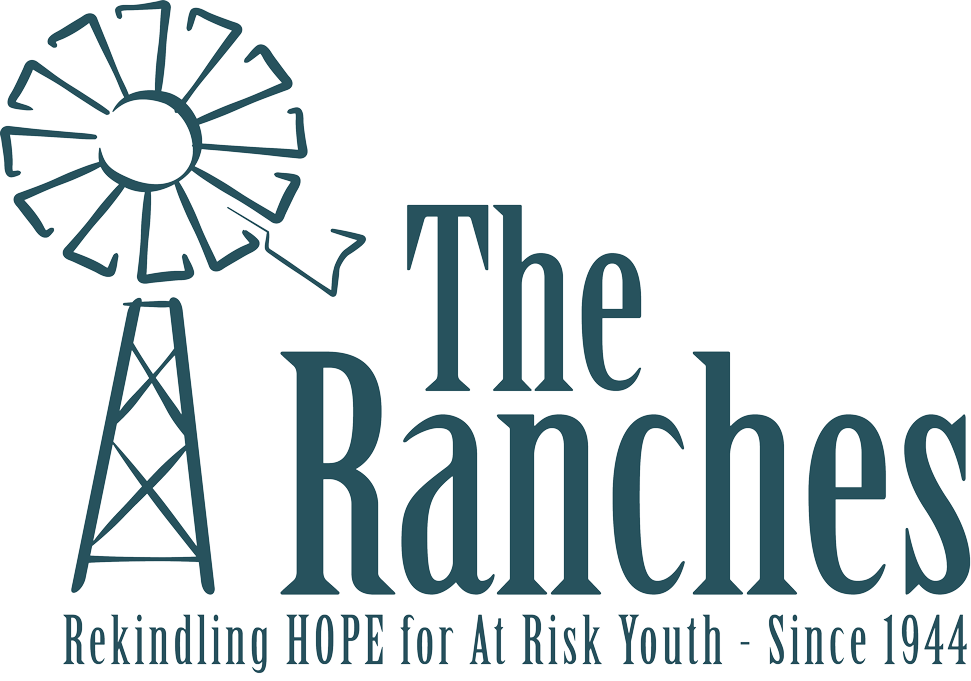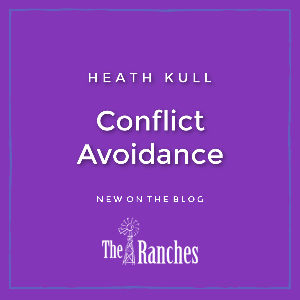I think that it is safe to say that every child that comes to The Ranches has been surrounded by a certain degree of conflict and has, as a result of this conflict, become somewhat resistant to change and practiced Conflict Avoidance.
By Heath Kull
For most of the kids, their young lives have been filled with a series of mixed messages and conflicting examples. Some believe that life is a lot easier if they just avoid conflict at all costs while others come to believe that conflict, and their readiness to engage conflict, can keep them safe by convincing most people to avoid them altogether. As a result, conflict is where our work at The Ranches must begin. We must be willing to engage those who are angry and think that being willing to argue at a moment’s notice is the best way to keep people from hurting them. We must simultaneously work at motivating those who avoid conflict with compliance to stand up for something, lest they be hurt by those who fail to see their boundaries. This is a difficult dynamic and is the central issue that we deal with almost every day.
Conflict Avoidant Kids
A number of kids come to The Ranches with a genuine and profound fear of conflict. In their experience, conflict doesn’t really have any benefits as they are usually on the losing end of the conflict that they were unable to avoid. For these kids, even eye contact is avoided as it may be misconstrued as challenging another. In addition to their fear of conflict, in many cases, these kids have had their self-esteem severely damaged during conflict. “Stupid,” “Dummy,” “Ungrateful” and “Disrespectful” are the labels that have been assigned to them during conflict. As a result, these kids don’t trust adults and tend to be introverted and hold their opinions more closely; if not altogether hiding them. While they are with us, we work to teach these kids to learn to trust that there are adults who can and will engage in conflict in order to stand up FOR them. While we can understand their avoidance of conflict, we also have to deal with the fact that these kids have, in addition, become very resistant to change. Hopefully, we can, through one of our Windmill Approach Classes, encourage them to start expressing their opinions again. It can be slow in the beginning and we have to remind ourselves not to react too strongly when they do share, but we are usually able to build a little bit of trust so that these kids again start to express themselves. While I am not always the best at being subtle and supportive to conflict avoidant kids, the rest of our team does an amazing job of building trust and encouraging these kids to venture out of their self-induced comfort zones. While a child who learns to be conflict avoidant may always tend to avoid conflict if possible, it is our hope that we can teach them to stand up when necessary and to, when necessary, pick their battles. In the end, they may need to engage in a little appropriate conflict when it comes time to parent their own children.
Conflict Oriented Kids
At the same time that we are attempting to help conflict avoidant kids to trust us enough to start expressing their opinions and stand up for their beliefs, we are typically dealing with a number of kids who rush head first into any conflict just for the sake of the fight. As you can imagine, getting the conflict oriented kids to stand down while trying to get the conflict avoidant kids to stand up, can be a bit tricky. These kids have learned that conflict can keep them from having to deal with people who may want to hurt them. As a result, these kids can also be very resistant to change. In reality though, we have to start at the same place with all of the kids that we serve; whether they are conflict avoidant or conflict oriented. We must start by building trust. In our experience, most of the conflict oriented kids are also looking for adults that they can trust; just like the conflict avoidant kids. For them, the difference lies in that they need to be able to trust that adults will stand up TO them, but do it appropriately and without violating boundaries. This again leads us back to our Windmill Approach Classes. Through these classes, we can begin to teach our conflict oriented kids that there are healthy, and sometimes less aggressive, ways to get a point across. This tends to be more of my area of expertise than conflict avoidance and I try to assist whenever possible. While a child who learns to be conflict oriented may always tend to engage conflict when possible, it is our hope that we can teach them to stand down when necessary and to pick their battles. In the end, they may need to engage in a little less conflict when it comes time to parent their own children.
In many organizations, particularly Christian organizations, conflict has become a subject that is taboo. While the Bible is filled with examples of conflict and of the need for conflict in order to bring about change, it has become a whole lot easier to just teach kids that they are not allowed to have conflict and that, in truth they are not allowed to express their anger and frustration. At The Ranches, we don’t believe that this is the best way to raise up our young people. For us, we believe that anger exists and it exists most strongly and profoundly in those who have been hurt by those who are supposed to love them the most. As a result, we view it as part of our job to deal with this anger and the conflict, or avoidance of conflict, that comes as a result. We must be willing to deal with each kid and be willing to earn their trust. To do this, we must deal with their anger so that we can, eventually, deal with their hurt. If we allow them to avoid their conflict or we allow them to mask their pain with unnecessary conflict, we have not served them well. It is my hope that, with your continued support, we will always serve them well.

